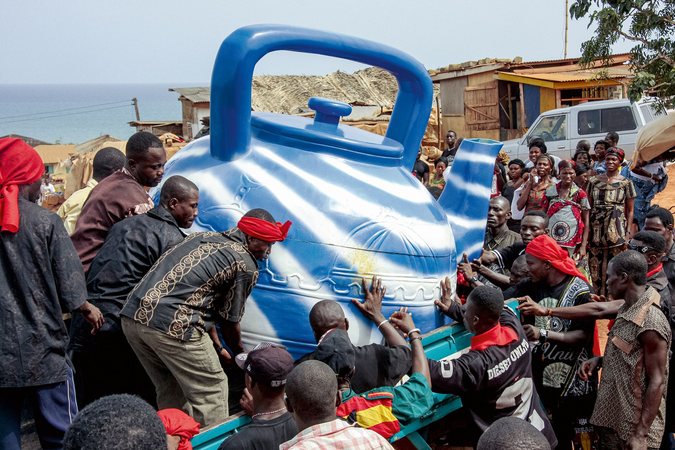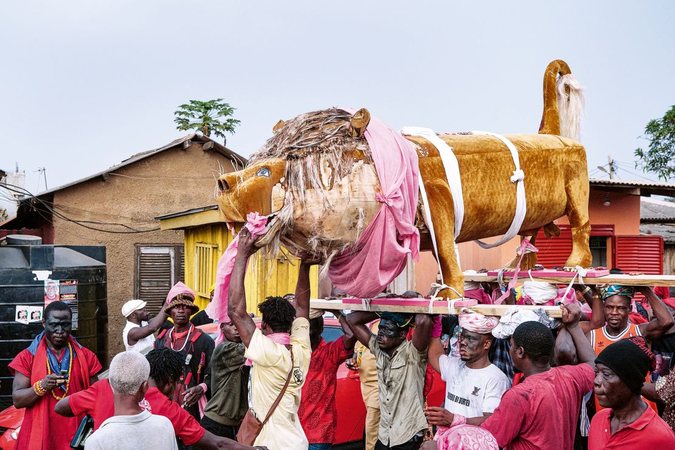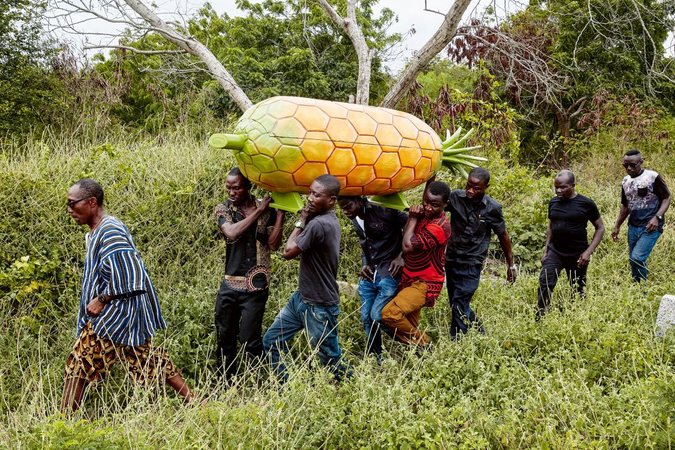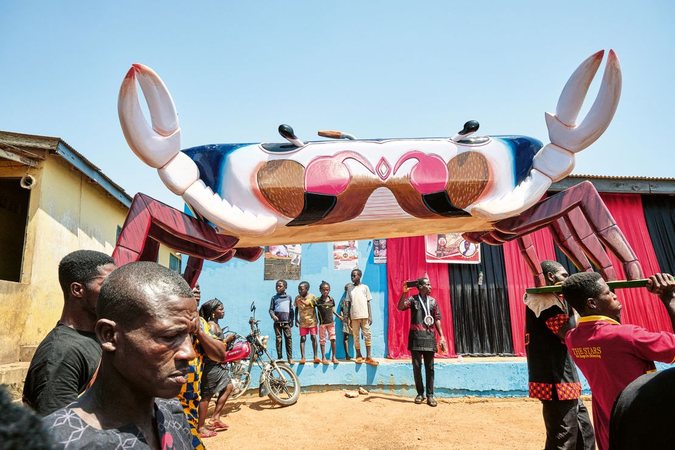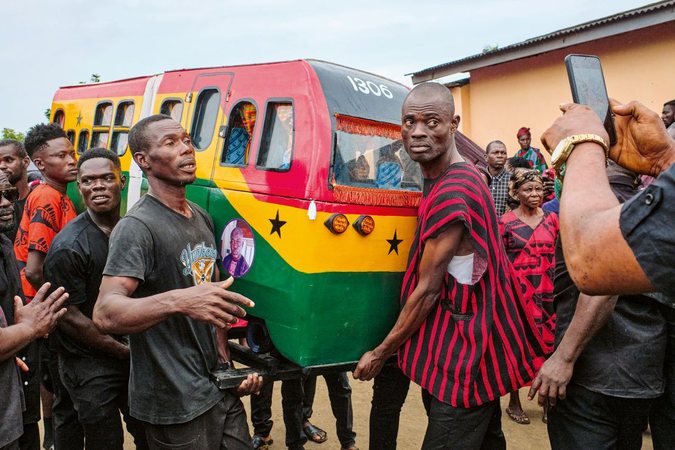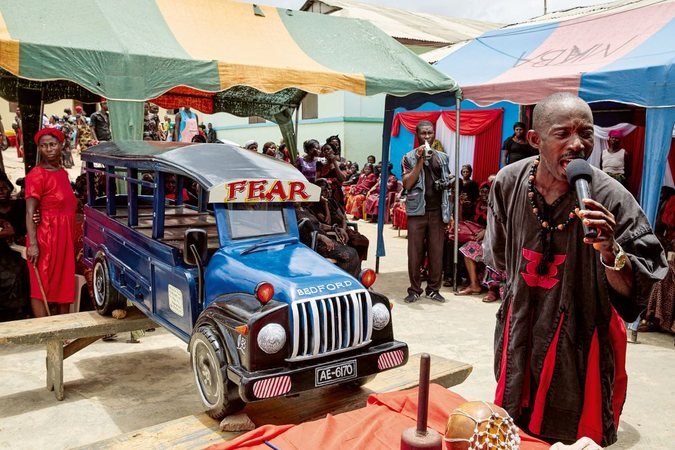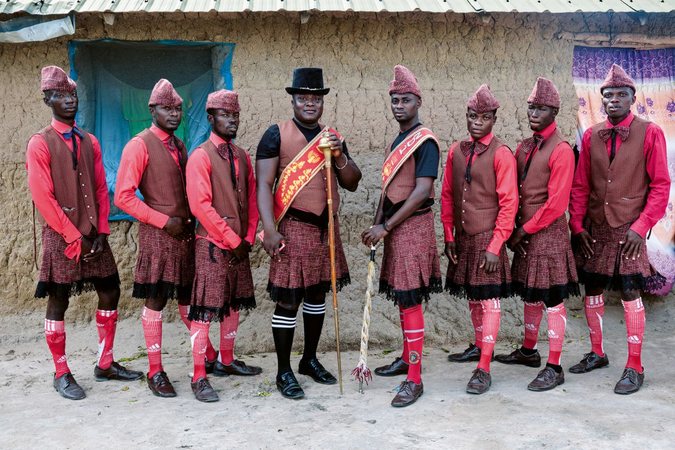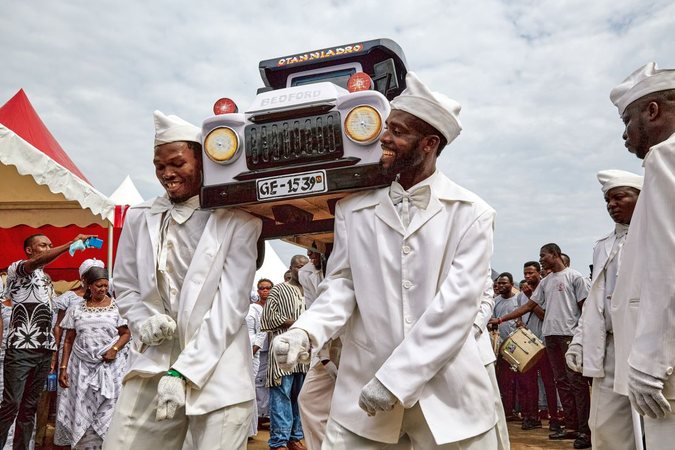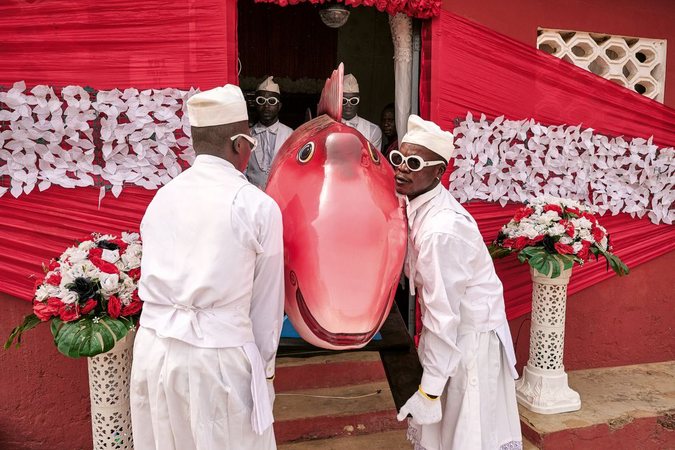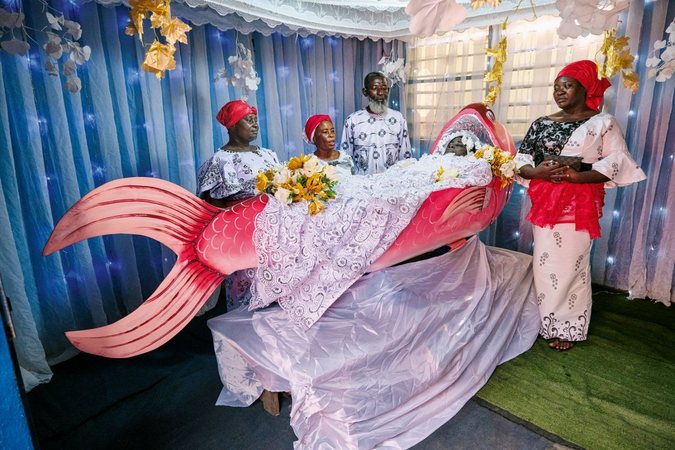
Originally published on CNN, based on research by anthropologist Regula Tschumi
In Ghana, death is not simply the end, but the beginning of a grand and often spectacular journey of remembrance. The funeral of Nii Agbetekor, the traditional supreme military leader of the town of Nungua, was prepared for a full two years before it took place in November 2024. His body lay in an Accra morgue all this time, while family members organized the last ceremony of his life, a process filled with traditional rites, inherited secrets and detailed plans that required extraordinary time, funds and care.

This funeral, according to Swiss anthropologist Regula Tschumi, was the largest to take place in more than two decades. She was there to document it. Although not everything went according to plan (the lion mannequin used during the traditional ceremony was engulfed in flames), everything went on with pomp. Four other mannequins, in the shape of a turtle, a chili pepper, a rooster and a fish, carried the five military leaders of the Amanfa clan, while the fifth mannequin carried the successor of Nii Agbetekor.

What was special about this funeral was that, without her immediate knowledge, Tschumi's own book on the funerals of traditional leaders had helped the organizers restore some of the forgotten rituals. Her book and the photographs she had collected from the last similar ceremony had served as a guide.

This is not the first time Tschumi’s research has influenced local practices. She has documented the funeral rituals of the Ga people of the Accra region for more than 20 years, as well as the Fante, Ewe and Asante people in neighboring regions. The results are summarized in the photo book “Buried in Style: Artistic Coffins and Funerary Culture in Ghana.”

One of the most popular traditions she documents is figurative coffins, shaped like objects that represent the life or dreams of the deceased. A football player was buried in a coffin shaped like an athlete painted with the American flag. A midwife was placed in a coffin shaped like a woman giving birth, while a traditional priest was placed in a giant blue teapot. But it is the family who decides on the design, often in collaboration with local woodworkers, who create the coffins in 5 to 10 days, most of the time with improvised tools.
These coffins are not expensive by Western standards, but they have gained international attention, with galleries and museums buying them for exhibitions, turning local craftsmen into global entrepreneurs.
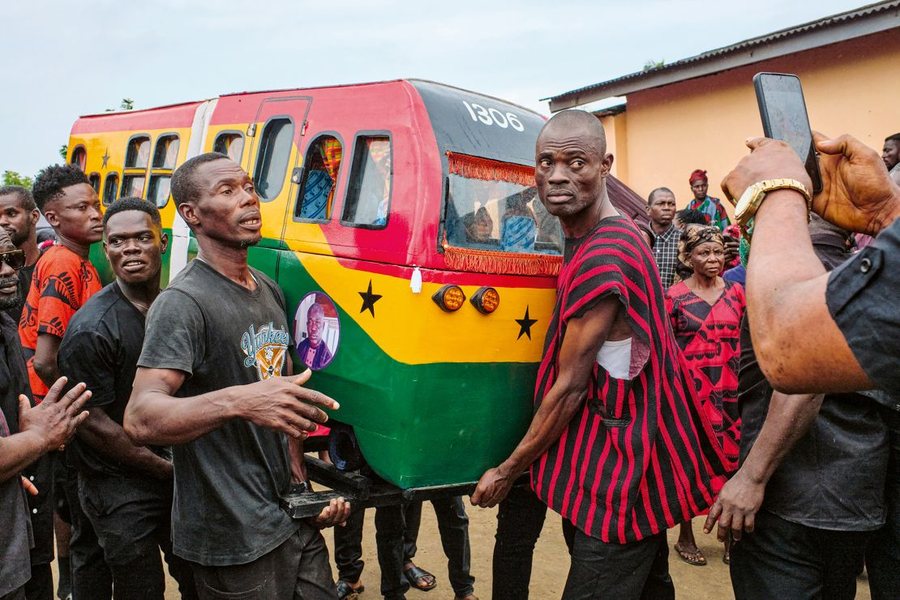
Another key figure in Tschumi’s story is Benjamin Aidoo, the man who created the global phenomenon of “coffin dancers.” He started out as a weekend pallbearer to help support his family, but he soon realized he could turn grief into joy through ceremonial dancing. “Why cry? We should celebrate the life of the deceased,” he says. Soon, his group was traveling the country to perform at funerals, and their videos went viral before the pandemic, turning his company into a business with dozens of employees.


But not every part of the ceremony is public. Many of the more profound rites, such as the burials of traditional chiefs and priests, remain secret and are performed at night. In some cases, the burial is even done with an empty coffin, while the body is placed in a secret location.

One of the most unique practices that Tschumi documents is that of exposing the body for a night, to say the last goodbye. The body is placed in various positions, dressed and adorned with symbols of the life it has lived. In some cases, the body is changed several times during the night. In 2017, a priestess was exposed on a mannequin hanging from the ceiling, and was dressed three times, including once when she was smeared with white paste to protect her soul.

This tradition doesn't just belong to important figures. A street worker was photographed in 2022 holding a beer in his hand, next to a blazing barbecue, as if at a regular party.
Ironically, academic research has also influenced the shaping of traditions themselves. Tschumi's 2011 book, "Concealed Art History...", was used by masters to show chiefs in other regions mannequin models that had not previously been used there. Now, they too are demanding the same symbols of honor.

Tschumi's work is not just documentation, but a living testament to the impact a scholar can have in preserving and developing a heritage. A funeral in Ghana is not just an end. It is an art. A collective memory. A celebration of life and eternity. (A2 Televizion)

